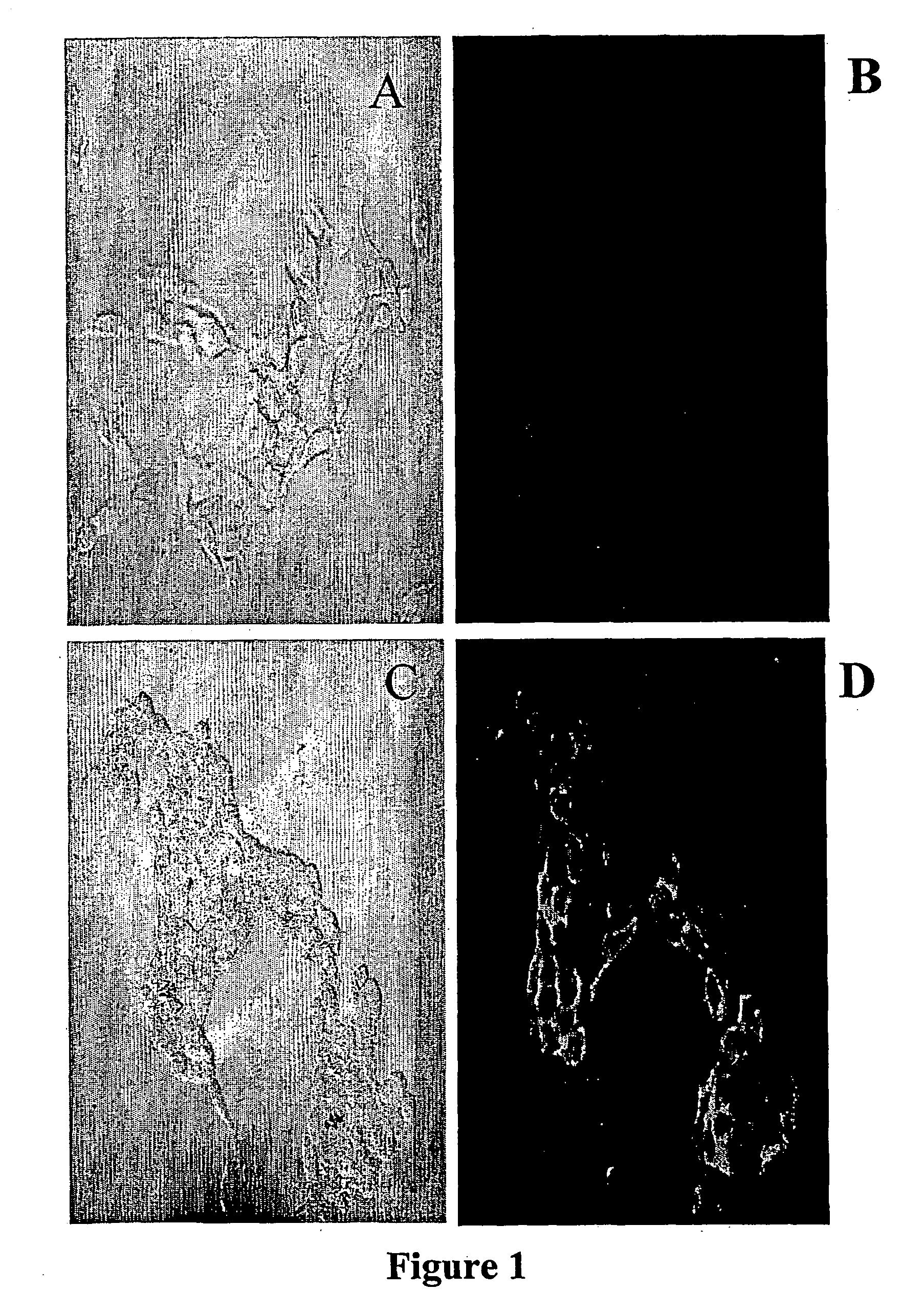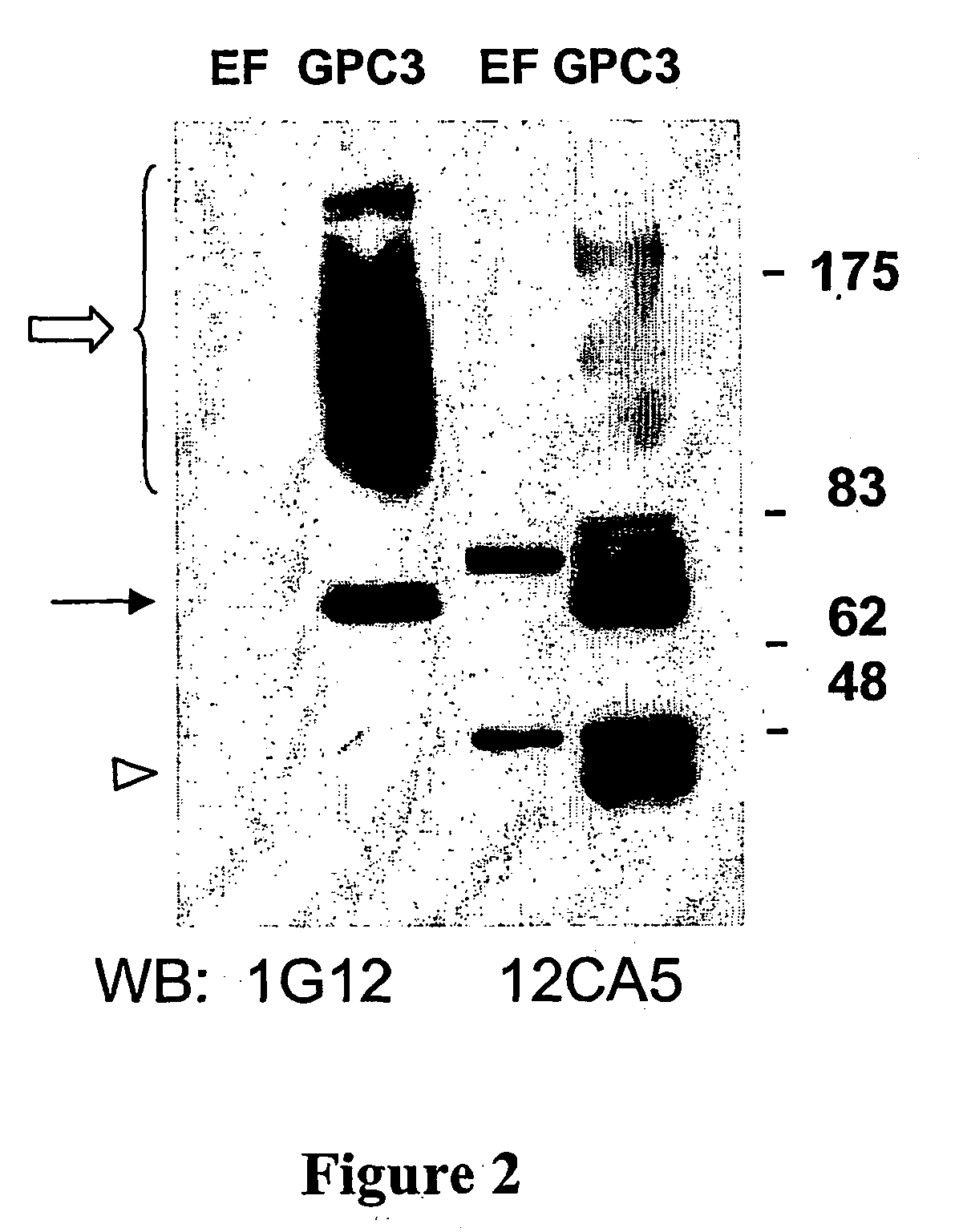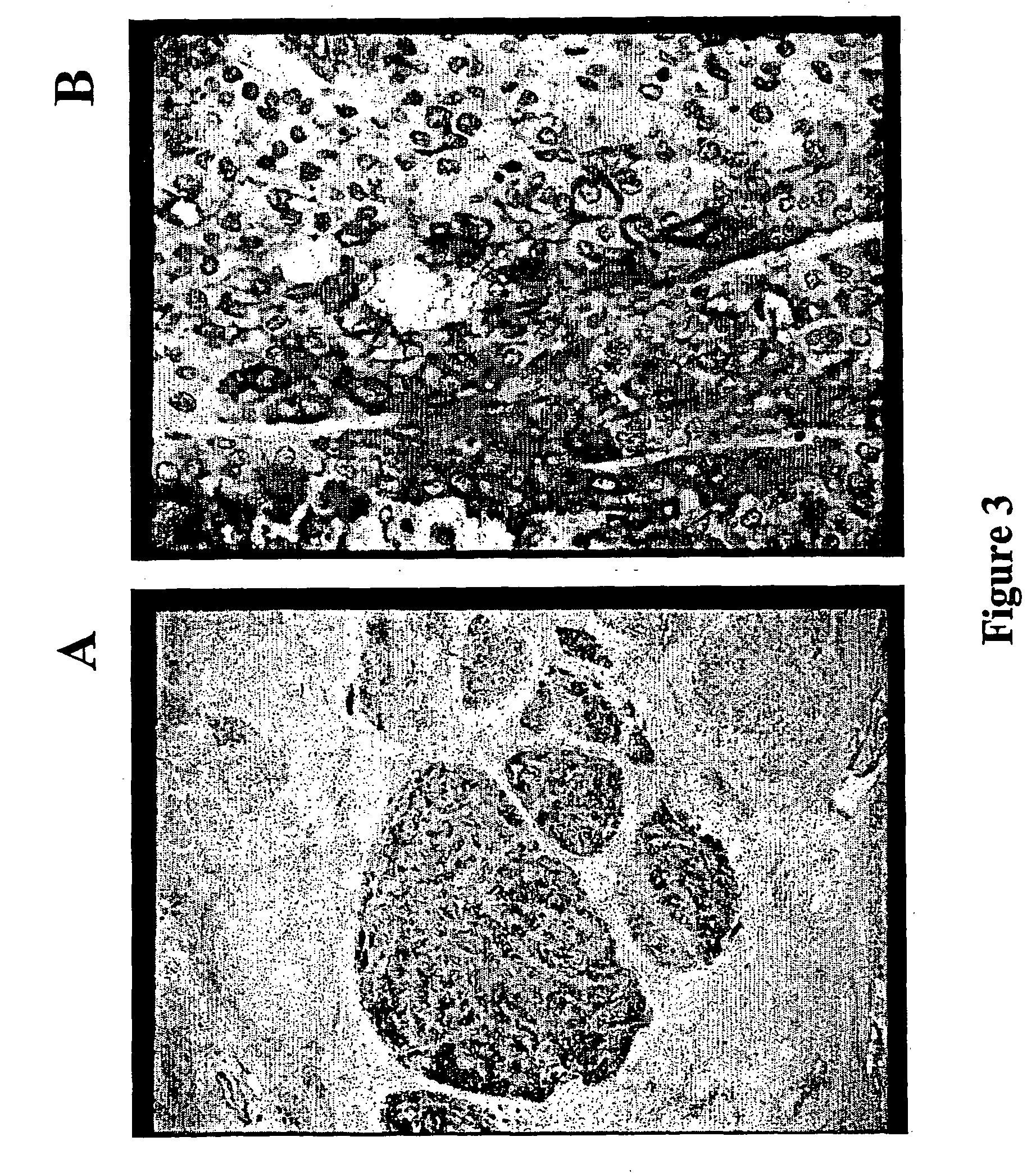Diagnosis of hepatocellular carcinoma
a hepatocellular carcinoma and hepatocellular carcinoma technology, applied in the direction of instruments, immunoglobulins, peptides, etc., can solve the problems of untreatable hcc, large symptomatic tumors, and difficult to distinguish well-differentiated cancers from benign lesions, so as to improve the specificity of hcc diagnosis and improve the specificity. the effect of h
- Summary
- Abstract
- Description
- Claims
- Application Information
AI Technical Summary
Benefits of technology
Problems solved by technology
Method used
Image
Examples
example 1
Production and Characterization of Polyclonal Antibodies to GPC3
[0102] A portion of the cloned GPC3 cDNA (Filmus et al., supra) encoding the 70 consecutive C-terminal amino acids of human GPC3 was expressed as a glutathione-S-transferase fusion protein in a conventional E coli expression system.
[0103] The fusion protein, purified on a glutathione column, was used to immunise sheep, using a standard protocol. The polyclonal antibodies were affinity purified against the 70 amino acid immunogen, by conventional methods, as described in “Antibodies, a Laboratory Manual”, (1988), Ed. Harlow et al., Cold Spring Harbor. The polyclonal antibodies were used for Western blot and immunoprecipitation studies.
example 2
Production of Hybridomas Yielding Monoclonal Antibodies to GPC3
[0104] The same immunogen, a GST-fusion protein including the C-terminal 70 amino acids of human GPC3, was used to raise monoclonal antibodies. This 70 amino acid region is the least conserved across species and was therefore used to generate antibodies specific for human GPC3. Hybridomas were generated using methods known to those skilled in the art, for example as described in Kohler and Milstein, Nature, 256:495-497, (1975).
[0105] Briefly, Balb / C female mice were immunized with a single i.p. injection containing 50 μg of a His-tagged carboxyl-terminal 70 amino acid human GPC3 fragment emulsified with Titermax Gold™ (Cedarlane) adjuvant. After 21 days, the mice were boosted with 50 μg of the same immunogen in the absence of adjuvant. Two days later, blood samples were collected from the tail vein, and the mouse sera obtained. The anti-GPC3 titre in the sera samples was tested by an enzyme-linked immunosorbent assay (...
example 3
Characterization of Monoclonal Antibodies
[0107] The specificity of the two monoclonal antibodies produced by 1G12 and 8H5 hybridomas was confirmed by Western blot analysis of protein lysates from HA-tagged-GPC3-transfected cells. As shown in FIG. 2, antibody 1G12 detected the band corresponding to the GPC3 core protein, and the smear corresponding to the glycanated form of GPC3. As a control, a parallel Western blot was run with an anti-HA antibody (12CA5).
PUM
| Property | Measurement | Unit |
|---|---|---|
| concentration | aaaaa | aaaaa |
| threshold level | aaaaa | aaaaa |
| threshold | aaaaa | aaaaa |
Abstract
Description
Claims
Application Information
 Login to View More
Login to View More - R&D
- Intellectual Property
- Life Sciences
- Materials
- Tech Scout
- Unparalleled Data Quality
- Higher Quality Content
- 60% Fewer Hallucinations
Browse by: Latest US Patents, China's latest patents, Technical Efficacy Thesaurus, Application Domain, Technology Topic, Popular Technical Reports.
© 2025 PatSnap. All rights reserved.Legal|Privacy policy|Modern Slavery Act Transparency Statement|Sitemap|About US| Contact US: help@patsnap.com



